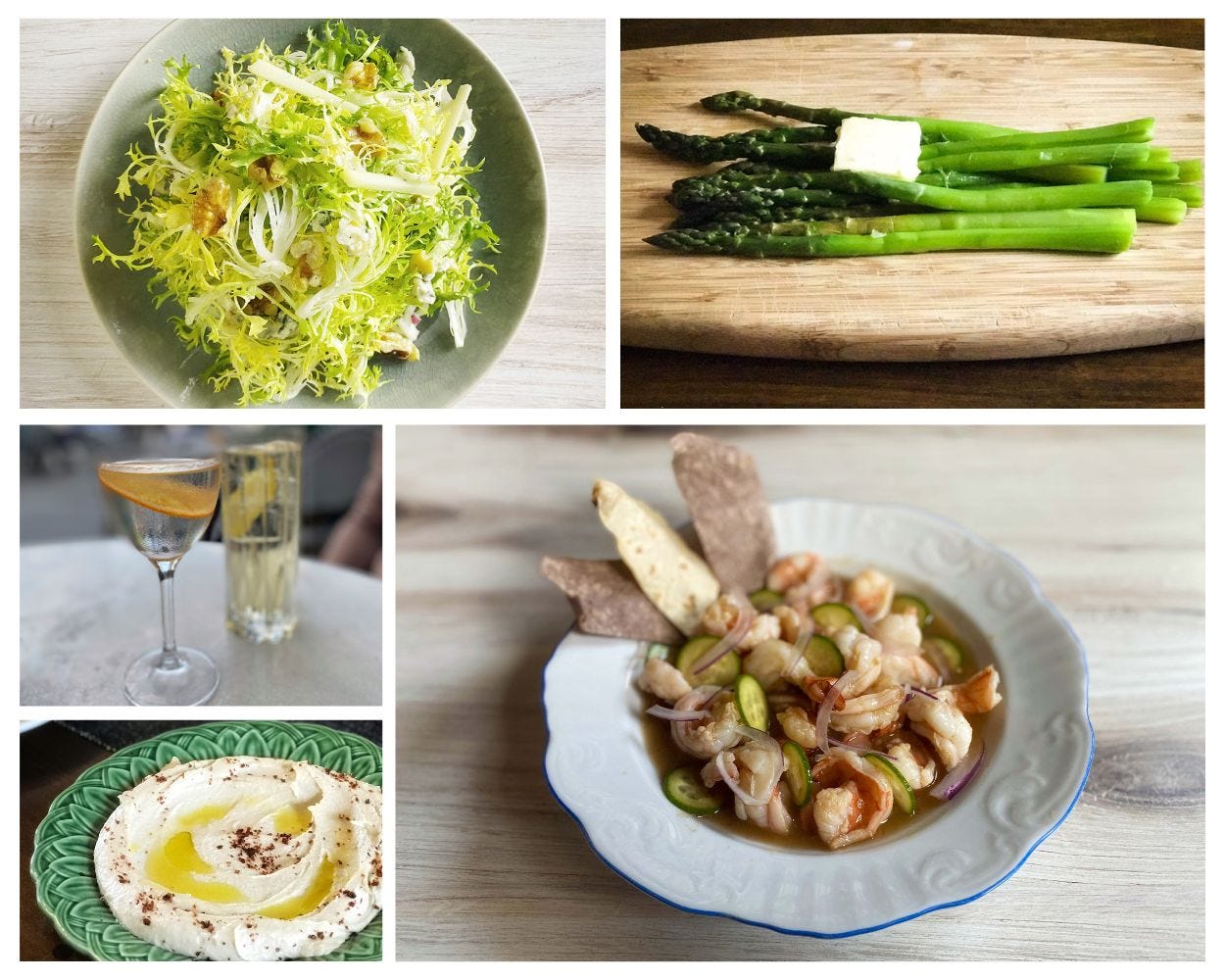Dilution solution
Every great bartender's secret is also the key to great salads, ceviches, hummus, pasta and more
Happy Friday, concentrated cook!
Last weekend, Thierry and I were in a cool cocktail bar, contemplating the enticing assortment of drinks on the menu. A guest sitting at the bar pointed to the one I had my eye on, and said “that one’s good, but it’s strong.” It was a tequila, rye and vermouth concoction. I went for it.
The gent was right: It was strong. In fact, “strong” was its most notable quality. So I did something that scandalized Thierry: I tipped my water glass into it, added just a few drops of ice water and swirled it around.
Then tasted again: outstanding.
It was a lesson I learned a few months ago, when I was fortunate to take part in a cocktail training for a client, led by one of the best barmen in the business: Nick Mautone. Nick taught us something every top-level bartender knows: A well mixed drink involves a certain level of dilution with water — usually about 20%. It smoothes everything out and pulls the drink together. The way you achieve the right dilution is either…



